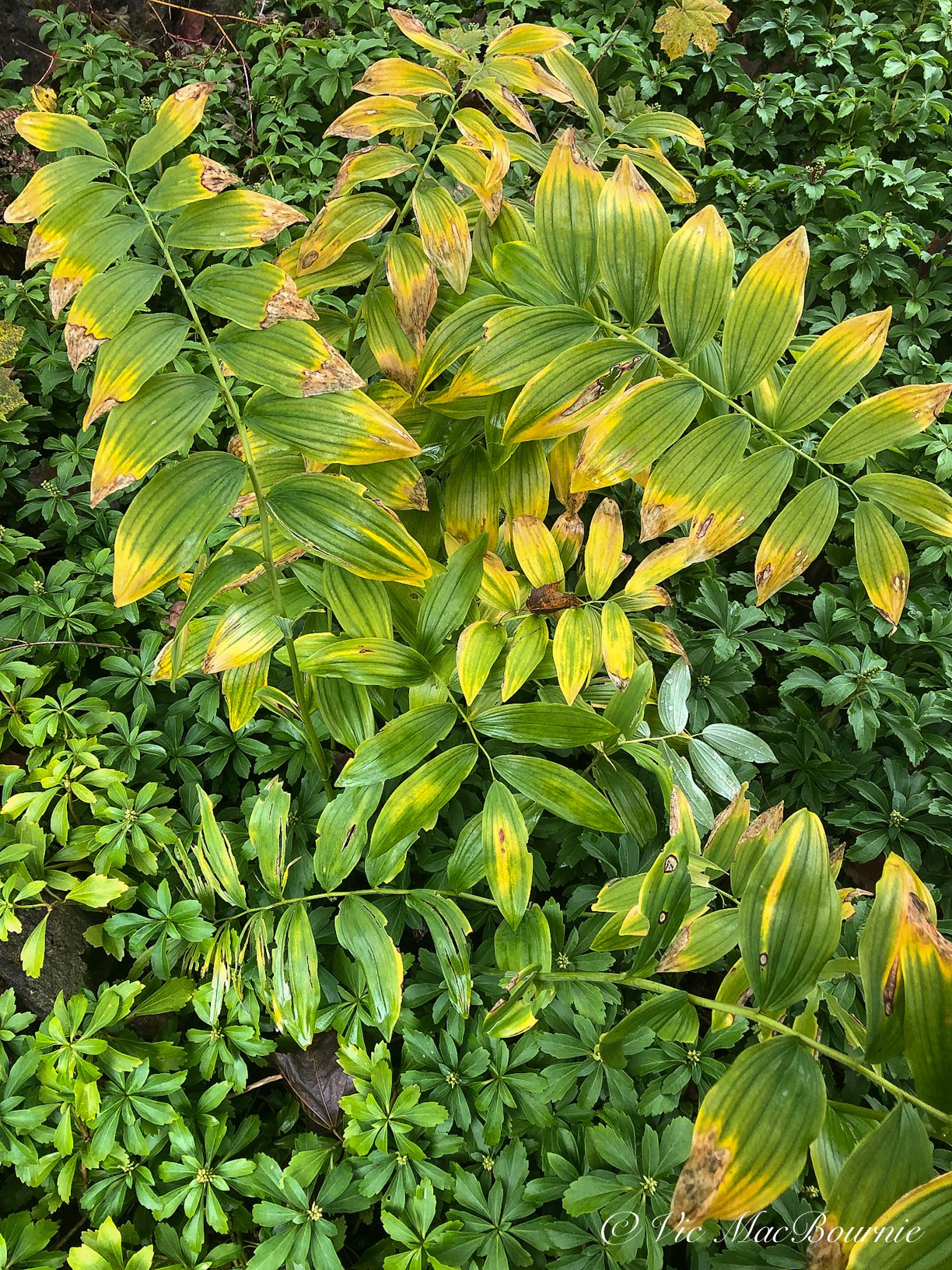Solomon’s seal is solid choice for the woodland or shade garden
Is Solomon’s seal a native North American wildflower?
Solomon’s Seal (Polygonatum), with its elegant arching stems that rise up in clumps through the forest floor, deserves a prominent place in any woodland garden.
This unassuming, eastern North American native plant is completely at home in the woodland or shade/semi-shade garden where it forms patches of attractive plants that spread – always under control – through underground rhizones.
The Graceful arches of the Solomon’s seal reveal the drooping creamy flowers dangling from beneath the leaves.
Like a lovely hosta, Solomon’s Seal is more of a textural plant that might not steal the show with colourful flowers in early spring or even striking berries. Instead, this native wildflower quietly reveals itself in early spring as individual, zig-zag arching stalks that will eventually stretch out to 1-5 ft. long, begin to emerge from the soil. Solomon’s seal has alternate, smooth leaves that grow up to six inches long and about three inches wide with parallel veins. A waxy coating on the round, smooth stems creates a blue-green colour.
How to use Solomon’s seal in the landscape
In the landscape, the Solomon’s seal are best used as an understory plant that helps create height with its arching stems and attractive leaves.
Eventually, clusters of up to one to four white or off-white tubular-shaped flowers dangle beneath the lance-shaped leaves. The flowers grow to about half-inch to 1-inch long.
A variegated form is available that adds a little more interest to the plant if the all-green variety just doesn’t cut it for you.
Although the plant is attractive throughout the spring and summer, its fall foliage really shines in the woodland garden. The arching stems turn a bright yellow as they age and become tattered over time.
For more on using Solomon’s seal in the garden, take a moment to read my article on using textural plants in the landscape.
How to grow Solomon’s seal
Like many native woodland flowers, Solomon’s seal will grow best in moist, loamy, woodsy soil in light shade. Don’t be afraid to cover them in late fall with fallen leaves to protect the clumps during freezing temperatures and eventually build up the soil around the plants.
Solomon’s seal arching branches show off the cream flowers following a spring rain.
In our landscape
We have had both the more common green native plant as well as the variegated form in our front woodland garden for several years where it happily grows through the ground covers creating interesting form for visitors walking up our garden path.
Do Solomon’s seal attract pollinators?
Because it is another early spring bloomer, Solomon’s Seal is an important plant for pollinators ranging from a variety of native bees, including (Bumble bees, digger bees) that gather nectar and pollen from the white or creamy flowers.
Do Solomon’s seal attract hummingbirds?
In addition, Ruby-throated hummingbirds take advantage of the early flowering plants as a source of nectar flying beneath the leaves to sip from the druping, tubular flowers.
Solomon’s seal shows its early fall colours in this image. The native plant is a highlight in the fall garden as yellow slowly envelops the entire plant.
What birds eat the berries from Solomon’s seal?
In late summer, woodland birds will zero in on the resulting blue berries providing nourishment to the birds that help to spread the seeds throughout the garden. The berries are eaten by Eastern Bluebirds, Hermit Thrush, American Robins, Veery and Wood Thrush. In addition the native wildflower attracts insects, which, in turn, help to attract insectivorous birds looking for a quick meal.
I would like to say that the native plants are deer resistant, but they are not. Don’t be surprised if you go out in the morning to find many of the plants munched by our four-legged friends. Deer predation is no reason not to grow these native plants. Instead, think of them as a little natural food for our forest friends.



